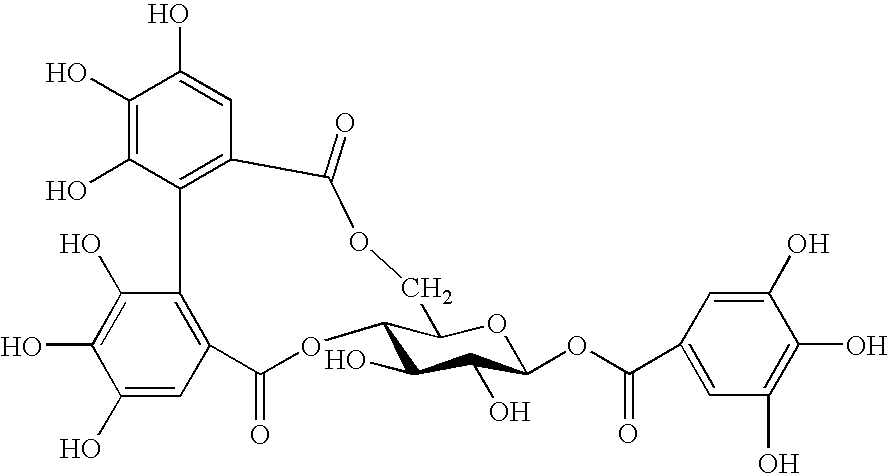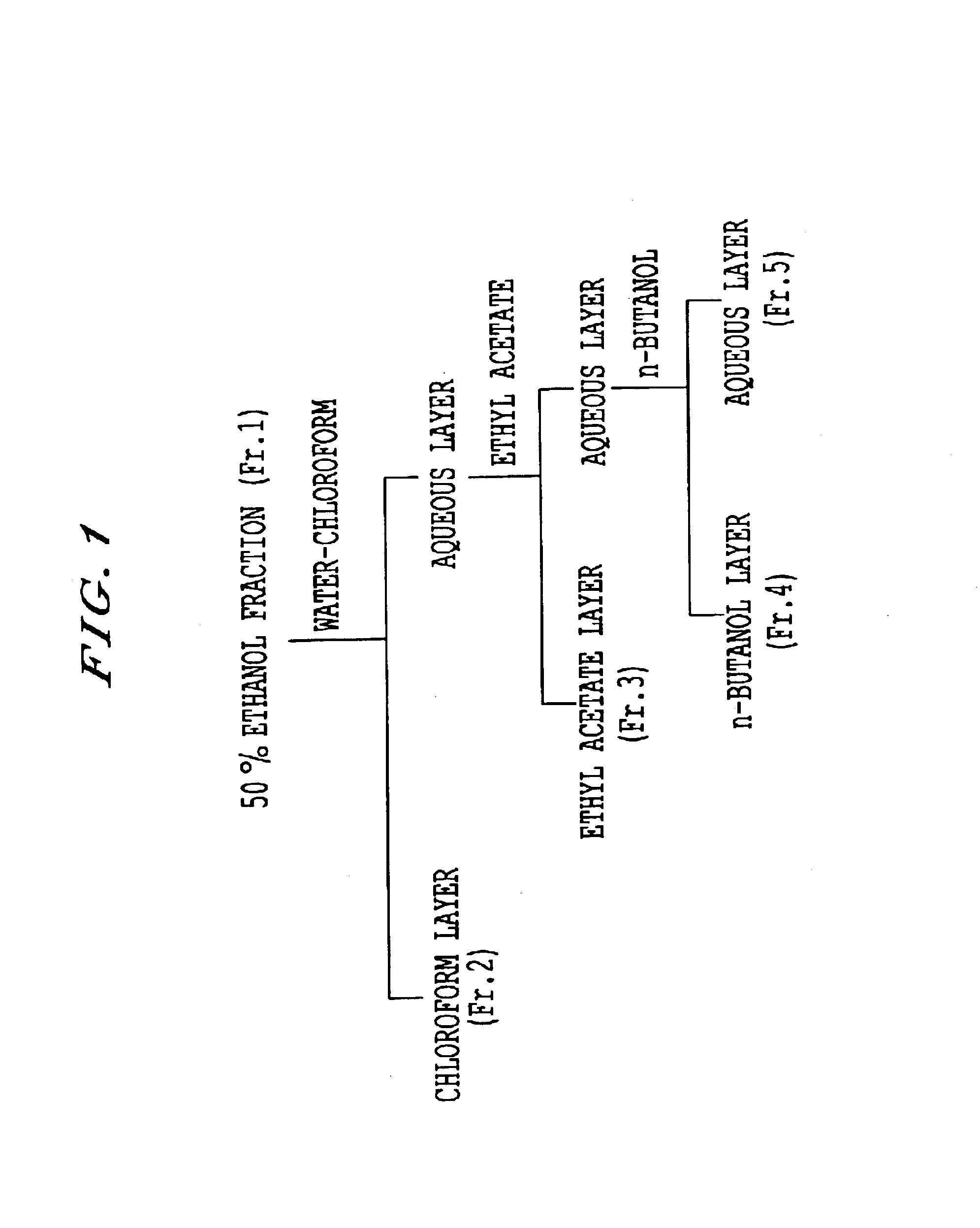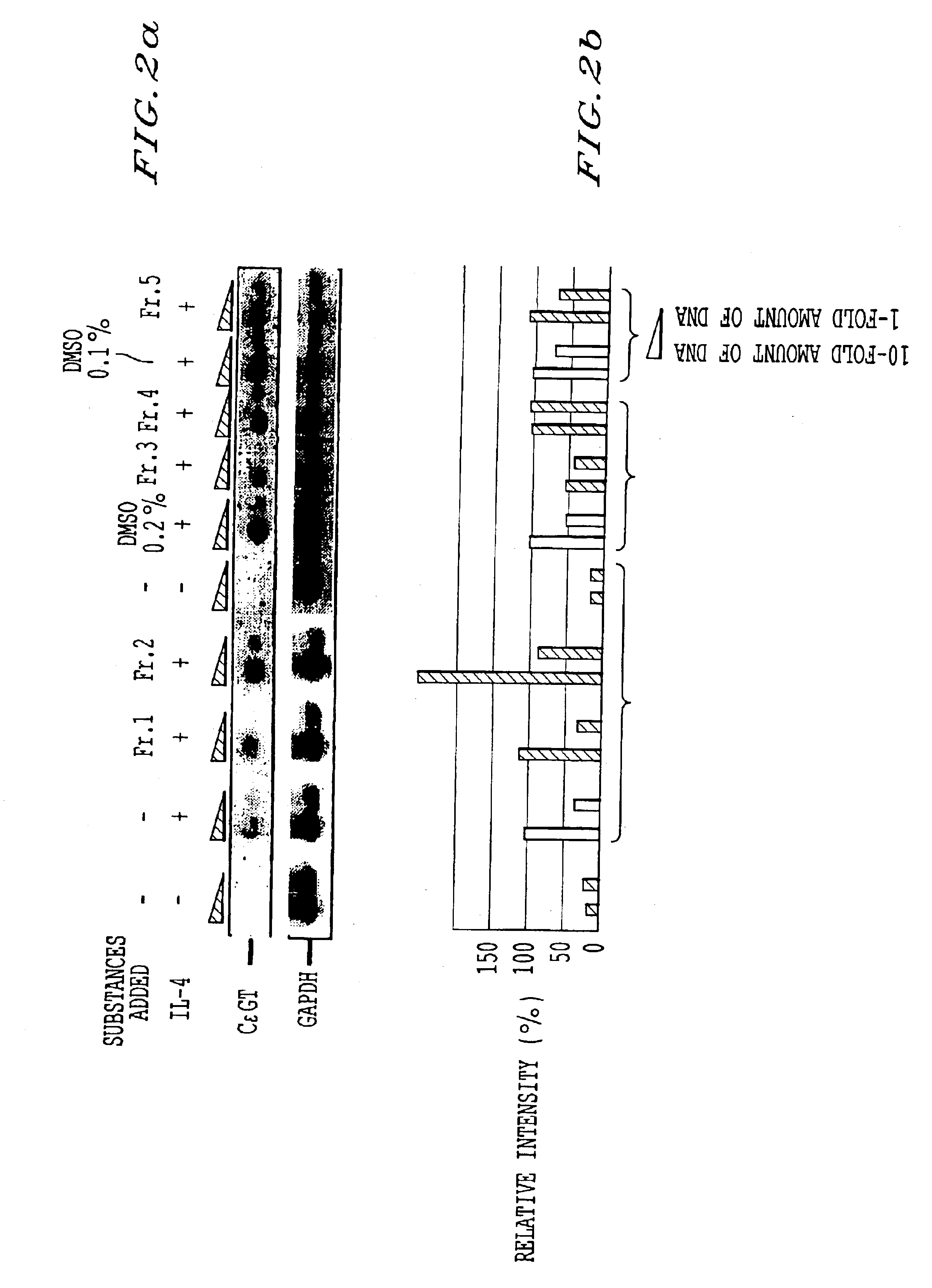Method for treating an allergic or inflammatory disease
a technology for allergic or inflammatory diseases and methods, applied in the field of pharmaceutical agents, can solve the problems of severe adverse effects, increased allergic symptoms, and a large social problem, and achieve the effects of reducing the number of patients, reducing the number of allergic reactions, and increasing the severity of allergic symptoms
- Summary
- Abstract
- Description
- Claims
- Application Information
AI Technical Summary
Benefits of technology
Problems solved by technology
Method used
Image
Examples
experimental example 1
Extraction of Polyphenol Fraction from Various Tea Leaves (Tea Leaf Extract)
[0043]Tea leaves (100 g) dried with microwave were extracted with 50% methanol and the extracted fraction was extracted with 30% chloroform. Its aqueous phase was further extracted with ethyl acetate and the ethyl acetate layer after the extraction was fractionated using an ODS column. An example of the method for the purification of strictinin is shown in FIG. 1. The fractionated fractions were named Fr. 1 to 5, respectively. All of Fr. 1 to 5 were once freeze-dried and then Fr. 1 to 2, Fr. 3 to 4 and Fr. 5 were dissolved in water, 0.2% DMSO and 0.1% DMSO, respectively so that each fraction was made 1 mg / mL.
experimental example 2
Identification of Active Fractions
[0044]Each of Fr. 1 to 5 in Experimental Example 1 was evaluated for its antiallergic action in vitro by a method for the expression of a transcript of an IgE heavy chain germline transcript which was to investigate the suppression of IgE production in human B cells (IgE class switch suppression). This is a method utilizing the fact that, when human B cells are stimulated by IL-4 to induce the production of IgE, a transcription is started from the upstream intron corresponding to an ε region (Cε) in the constant domain gene of the Ig gene whereupon a transcript (CεGT: germline transcript) is expressed and, after that, a class switch of IgE is resulted by a DNA recombination. CεGT is an RNA which is always expressed before the IgE production is induced and the expressed amount of CεGT is proportional to the class switch amount of the IgE gene. Therefore, when the degree of expressed amount of CεGT is detected, it is possible to estimate the IgE class...
experimental example 3
Measurement of Antiallergic Activity in Human B Cell Line
[0055]Strictinin which was identified as an active component in Experimental Example 2 was used for measuring the antiallergic activity in human B cell line according to the same way as in the method for the expression of an IgE heavy chain germline transcript mentioned in Experimental Example 2. Incidentally, strictinin was added at the same time with IL-4. The adding concentrations of strictinin were 1, 10 and 25 μM. FIG. 3 shows an influence of strictinin on the CεGT inducible expression by IL-4 in the human cell line DND 39. In the drawing, GAPDH shows glyceraldehyde-3-phosphodehydrogenase and □ shows a control.
[0056]As shown in FIG. 3, it was apparent that, in the human B cell line, strictinin strongly suppressed the IgE class switch by addition of IL-4. Since IgE is an immunoglobulin deeply participating in the allergic reaction, the fact that IgE class switch is suppressed means that antiallergic activity is available.
PUM
| Property | Measurement | Unit |
|---|---|---|
| Dimensionless property | aaaaa | aaaaa |
| Dimensionless property | aaaaa | aaaaa |
Abstract
Description
Claims
Application Information
 Login to View More
Login to View More - R&D
- Intellectual Property
- Life Sciences
- Materials
- Tech Scout
- Unparalleled Data Quality
- Higher Quality Content
- 60% Fewer Hallucinations
Browse by: Latest US Patents, China's latest patents, Technical Efficacy Thesaurus, Application Domain, Technology Topic, Popular Technical Reports.
© 2025 PatSnap. All rights reserved.Legal|Privacy policy|Modern Slavery Act Transparency Statement|Sitemap|About US| Contact US: help@patsnap.com



